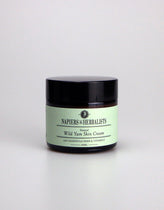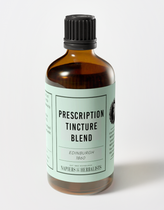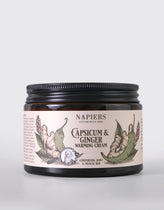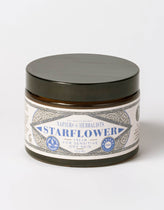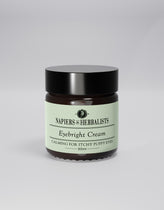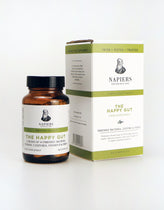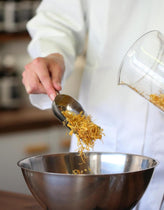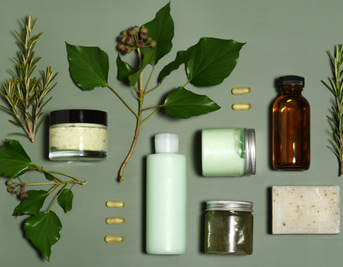Sophrology Practitioner - Mind & Body Therapy Trainee in CBT - Cognitive Behavioural TherapyCOSCA (Counselling & Psychotherapy in Scotland) Cybele is a passionate Sophrologist and founder of Chamapola, Healing Yourself - Healing Together....
Keep ReadingVitamin D, the Sunshine Vitamin by Patricia ClarkNutritional Therapist Our Nutritional Therapist, Patricia Clark Nat. Nut., BANT., takes a look at a vitamin that we can't make without sunshine. Vitamin D is a particularly important vitamin for us...

Vitamin D, the Sunshine Vitamin
Our Nutritional Therapist, Patricia Clark Nat. Nut., BANT., takes a look at a vitamin that we can't make without sunshine. Vitamin D is a particularly important vitamin for us here in Scotland, as the low levels of light during the winter months make getting enough of this vital vitamin extra important.
You have probably heard of vitamin D being referred to as the ‘sunshine vitamin’. This is because it is produced when your body is exposed to sunlight. Vitamin D is unlike other vitamins because your body is able to produce it, so you are not reliant on getting it through the food you eat. What also makes vitamin D a little bit different is that when your body produces vitamin D it converts it into a hormone called calcitriol (which is often referred to as the biologically active form of vitamin D). Hormones are like chemical messengers which travel around the body and control how our organs and cells work. It is for this reason that vitamin D is important to the smooth running of so many different processes in your body. Research is showing that vitamin D deficiency affects much more than bone health, which is why it is fast becoming known as a ‘super nutrient’.
WHERE DO YOU GET VITAMIN D FROM?
There are two ways we get vitamin D naturally: from the sun (vitamin D3) and from your food (vitamin D2 and vitamin D3). Vitamin D3 and vitamin D2 are sometimes both just referred to as vitamin D. In fact, vitamin D3 and vitamin D2 are both biologically inactive precursors of vitamin D.
Sunlight
THIS IS THE MAJOR SOURCE OF VITAMIN D FOR US ALL.
When your skin is exposed to ultraviolet B (UVB) light from the sun you use a substance called 7-dehydrocholestrol to make vitamin D3 (cholecalciferol). Your body then converts this into the biologically active form of vitamin D (the hormone, calcitriol) for use in many different functions in the body.
Your skin can naturally produce approximately 10,000iu of vitamin D in response to 20-30 minutes summer sun exposure. Having said that there are a number of different factors which will influence the amount of vitamin D your skin will produce.
Melanin (the dark pigment in your skin) is a natural sunscreen which absorbs UVB light and lowers the production of vitamin D3. Sunscreen works in a similar way to absorb UVB light and also reduces the amount of vitamin D3 you are able to synthesise on your skin. In addition, UVB light availability, and therefore the production of vitamin D3, is reduced or blocked by cloud cover, environmental smog, shade and clothing. The angle of the sun also plays a role in the availability of UVB light. Latitude, season, and time of day create the solar zenith angle, which determines the intensity of sunlight. If you live at higher latitudes, you are more at risk of vitamin D deficiency than if you are living in more equatorial latitudes, because the intensity of sunlight produced is lower. If you live in Scotland this means there is not enough UVB light available for your body to produce vitamin D during the winter months (Glasgow latitude is 56°).
Food
WHAT FOODS CONTAIN VITAMIN D?
There are two types of vitamin D present in our food. Vitamin D2 comes from plant sources and vitamin D3 comes from animal sources.
Vitamin D3 (cholecalciferol) and vitamin D2 (ergocalciferol) are biologically inactive precursors of vitamin D, which are converted in the body into the biologically active form of vitamin D (the hormone, calcitriol).
Lots of people don’t realise that there is actually very little vitamin D we can get from our food as there are only a few foods that contain vitamin D. Oily fish (such as salmon, mackerel and sardines) has the highest levels of vitamin D and there is also some contained in eggs and fortified dairy and cereal products. As you can see from the table below these foods just don’t have enough vitamin D to meet our needs.

Vitamin D from food is absorbed in the body with the help of fat so if you eat a low fat diet you may have problems absorbing vitamin D from food.
Function
SO WHAT EXACTLY DOES VITAMIN D DO FOR YOU?
It contributes to many different biological processes within your body, including:
- helping your body properly absorb calcium and phosphorus;
- regulating your immune system;
- controlling blood pressure (by decreasing production of a hormone called renin);
- developing and maintaining healthy function of bones and muscles;
- maintaining blood insulin levels by regulating secretion; and
- positively influencing mood.
Deficiency
WHO IS AT RISK FROM NOT GETTING ENOUGH VITAMIN D?
- People with darker skin: as there is less vitamin D synthesised on darker pigmentations
- People who are not exposed to enough sunlight: through covering up skin with clothes or sunscreen, not spending enough time outdoors, or working in cities where buildings or smog shade the sun
- People living in countries above approximately the 37th latitude (such as Scotland), where the angle of the sun means there is no vitamin D available between November and March
- Infants who are exclusively breast fed
- Adolescents, especially during growth spurts
- Increasing age: there is a reduced capacity to produce vitamin D with age
- Obese people: vitamin D is deposited in body fat, meaning it becomes less bioavailable to people who are overweight and have excessive fat stores
- Those with liver, kidney, intestinal or gallbladder malfunctions: these conditions may interfere with vitamin D activation and absorption
Requirements
HOW MUCH VITAMIN D DO YOU ACTUALLY NEED?
Current recommended nutrient intakes for vitamin D vary depending on the stage of life you are at as well as being influenced by any conditions you may have.
The table below shows the reference nutrient intakes for vitamin D as set by the Department of Health.

*The adult recommendation is for at risk groups.
The Endocrine Society provides the guidelines below to prevent and treat vitamin D deficiency relating to musculoskeletal benefits.

Supplementation
SHOULD YOU USE A SUPPLEMENT TO GET THE VITAMIN D YOU NEED?
We are simply not getting as much sun as we used to, for a variety of different reasons, and although food contains some vitamin D, there is not enough to meet our needs.
It can be confusing to know how much vitamin D you need as recommendations can vary. In the past there have been concerns raised about vitamin D toxicity, however it now well established that dangerous levels of supplementation are extremely rare and associated with very high, long term doses. Vitamin D toxicity does not occur with exposure to the sun. Vitamin D3 is currently the form which most supplements take as it is easier to absorb and more effectively converted in your body to its biologically active form. Sometimes vitamin D is measured in different units: international units (iu) or micrograms (µg or mcg). 1µg = 40iu.
As Nutritional Therapists, we work with you and assess your individual case history and risk factors for vitamin D deficiency. The only way to know your vitamin D level for definite is to test it, and we can help you access that too.
Research is ongoing about the important role vitamin D plays in general well-being in addition to a role in chronic health conditions. Deficiency and optimal levels continue to be researched along with the impact of sub-optimal vitamin D intake in northern countries, such as Scotland.
Supplementation is likely to become increasingly recognised to support optimal health. For the majority of the Scottish population it is a good idea to make sure you get some summer sun and supplement with vitamin D in the winter months.
REFERENCES
Bender, DA. 2002. The vitamins. In: Gibney MJ, Vorster HH, Kok FJ, editors. Introduction to human nutrition. The Nutrition Society Cornwall; 2002. pp. 125–76. Blackwell Science.
Drake, V. (2011). Vitamin D and Skin Health. Linus Pauling Institute. Available at http://lpi.oregonstate.edu/mic/micronutrients-health/skin-health/nutrient-index/vitamin-D (accessed: 12/01/16)
Holick MF, Chen TC. 2008. ‘Vitamin D deficiency: a worldwide problem with health consequences’. American Journal of Clinical Nutrition. Apr;87(4):1080S-6S. Available at http://ajcn.nutrition.org/content/87/4/1080S.long (accessed: 04/01/16)
Holick MF et al. (2011). ‘Evaluation, treatment, and prevention of vitamin D deficiency: an endocrine society clinical practice guideline.’ The Journal of Clinical Endocrinology and Metabolism. 2011 Jul;96(7):1911-30. Available at http://press.endocrine.org/doi/10.1210/jc.2011-0385?url_ver=Z39.88-2003&rfr_id=ori:rid:crossref.org&rfr_dat=cr_pub%3dpubmed (accessed: 12/01/16)
Sigmund CD. (2002). ‘Regulation of renin expression and blood pressure by vitamin D(3)’. Journal of Clinical Investigation 110(2):155-156. Available at http://www.ncbi.nlm.nih.gov/pmc/articles/PMC151071/ (accessed: 17/01/16)
Tripkovic, L et al. (2012). ‘Comparison of vitamin D2 and vitamin D3 supplementation in raising serum 25-hydroxyvitamin D status: a systematic review and meta-analysis. In the American Journal of Clinical Nutrition Jun; 95(6): 1357–1364. Available at http://www.ncbi.nlm.nih.gov/pmc/articles/PMC3349454/ (accessed: 17/01/16)
